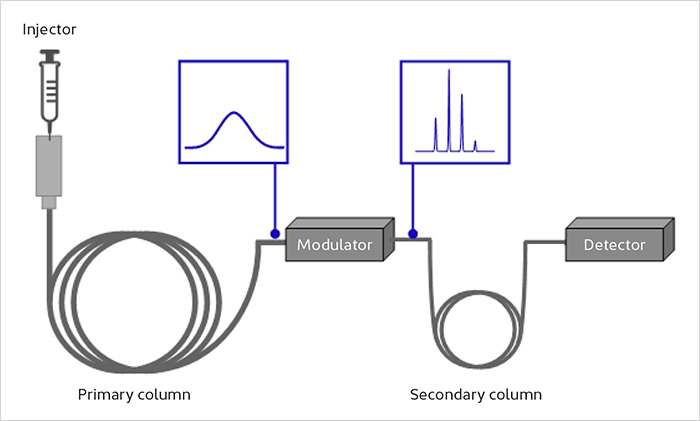This paper provides a short overview of the theory and practice of the rapidly-developing field of two-dimensional gas chromatography (GC×GC). Included in the discussion are a summary of the detectors used, an assessment of the options available for modulating the first-column eluate, and some recent developments in methodologies for interpreting the results.

Basic principles
Comprehensive two-dimensional gas chromatography (GC×GC) is a highperformance analytical technique with an increased separation capacity that enhances the analysis of complex samples, such as petrochemicals, fragrances and environmental extracts.[1] GC×GC involves coupling two columns with different stationary phases, to allow separation of a mixture based on two different separation mechanisms (Figure 1). The sample is therefore separated in two dimensions.[2] This provides GC×GC with the capacity to resolve an order of magnitude more compounds than traditional gas chromatography.[3]
 Figure 1 Schematic of a GC×GC system.
Figure 1 Schematic of a GC×GC system.




